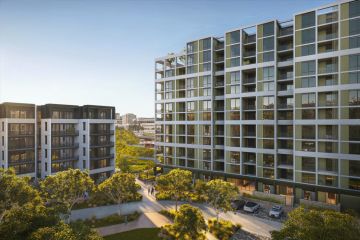The good news for home sellers this spring ... and the bad news for buyers
The auction clearance rate is approaching a key benchmark which could tip the property market well in sellers’ favour, just in time for the traditional spring selling season.
Clearance rates in Sydney and Melbourne have been rising and reached 68.2 per cent and 69.3 per cent, respectively, for the month of July. This was up from about 66 per cent in June.
It’s the highest since June 2023, other than February last year in Sydney, which recorded a rate of 68.3 per cent. Falling interest rates and few homes for sale are contributing to rising clearance rates.
Economists have kept a keen eye on the figures because it gives a timely and fairly reliable indication of what prices will do. The clearance rate is calculated by taking the number of successful sales and dividing by the total number of auction results reported to researchers by deadline. Domain uses a weekly figure to catch auctions not held on Saturdays.
A clearance rate of 60 per cent is considered a balanced market. North of there will bring small price increases, and passing the benchmark of 70 per cent will bring rapid price increases and is considered a sellers’ market.
“Sixty per cent is the mark for housing inflation,” said Domain chief of research and economics Dr Nicola Powell. “It gives you an indication that buyers are meeting sellers’ expectations … once you get past 60 per cent, it gives you an indication things are moving and homes are selling under the hammer.”

Westpac senior economist Matthew Hassan agreed. “It’s clearly above average and broadly associated with maybe 8 per cent price growth a year,” he said. “It’s a pretty good guide and it’s pretty timely. What it’s telling us is, since May, both [Sydney and Melbourne] have improved.”
Most properties for sale don’t go to auction, but the indicator has proved reliable in the past and it’s thought to cover enough sales to show how the wider market is moving.
“It can also just be the most visible part of the market, and it’s shaping expectations to some extent,” Hassan said.
It was not a perfect indicator, he warned, and was not reliable in cities with a less prominent auction culture such as Brisbane or Perth.
“You should never rely solely on one indicator, and the preliminary clearance rates can be as much as 8 percentage points out, so we need to be aware of what else is going on.”
Preliminary clearance rates are published on a Saturday evening, and are manually compiled by data houses, such as Domain. Agents who fail to sell at auction are more likely to submit their results late, or not at all, and the rate is almost always revised down later.
A clearance rate of more than 70 per cent indicates more rapid price growth and tighter competition for homes; both economists said it was possible monthly clearance rates could clear this barrier come spring.
Part of why they think that is the case is because clearance rates have been unseasonably strong in winter, which usually has fewer homes for sale and fewer buyers out and about looking for a home. They expect the rates to trend up into spring.

“From March you have this consistent rise in clearance rate each month – that’s momentum,” Powell said. “Spring will absolutely be a test to see if this is a flash-in-the-pan scenario.
“If you’re going to sell in spring, your decision has been made in winter. Prices are now rising, clearance rates are rising. If I were an owner, I would be thinking that this is the time to list my home for sale.”
It’s too soon to say which way the property market will go in spring, but there’s a growing consensus that Reserve Bank interest rate cuts have led to the market’s upswing and will continue to prompt buyers and sellers to transact. The next RBA decision is on Tuesday.
“Interest rate easing is generating some lift in both of those markets around prices,” Hassan said.
Powell said it was unlikely that clearance rates would approach 80 per cent, which was usually only seen in boom times.
“Prices will be constrained by affordability, though … [and] the RBA is very clearly cautious as to when and how they deliver those rate cuts,” she said. “Affordability and the fact this will be a cautious rate reducing cycle from the RBA will be two things that help to limit the extreme momentum in price rises, it will constrain price gains.
“We’ll see consistent results of [percentages] in the high 60s even low 70s for the latter half of this year.”
We recommend
We thought you might like
States
Capital Cities
Capital Cities - Rentals
Popular Areas
Allhomes
More
- © 2025, CoStar Group Inc.









